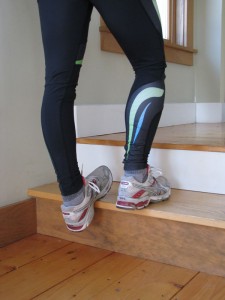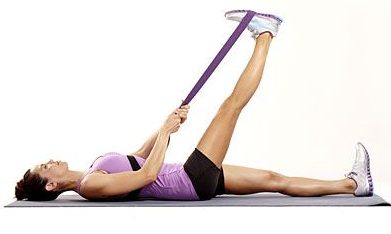© 2017 Runner’s Tribe, all rights reserved.

The Achilles tendon comes under an incredible amount of strain in the normal day-to-day life of most runners. It is therefore often the victim of strain/injury secondary to overuse. Understandably, our calf muscles are closely linked to our Achilles tendon, when one suffers chances are the other does as well. Therefore taking care of both your calves and Achilles in unison is vital to stay free from Achilles injuries.
Common Causes of Achilles Tendonitis
The most common causes of Achilles Tendonitis include:
- Interval/speed training without gradual adaptation.
- Hill sessions without gradual adaptation.
- Tight calf muscles.
- Overuse and not building up the training loads gradually over time.
- Age (the older we get the weaker our calves become).
- Running in minimalistic shoes without gradual adaptation.
- Running barefoot without gradual adaptation.
- Overpronation.
- Excessive road running without gradual adaptation.
How to Avoid Achilles Tendonitis
Take it Gradually
Since interval and hill sessions are known to commonly cause Achilles tendonitis it is vital that such forms of running are introduced into an athlete’s program as early as possible, and done so in a very gentle and gradual way. A gradual build-up to both speed and hill work is vital in order to allow for gradual adaptive lower limb strengthening to occur. Become impatient and do too much too soon, and you are just asking for trouble.
Likewise, gradual adaptation is also vital if you decide to wear more minimalistic shoes or decide to race or train on the roads more. Take it steady, good things take time.
Keep your Calves (and therefore Achilles) Strong and Flexible
Having very strong calves is incredibly important. The stronger the calves, the more stress and intense exercise that they can handle.
Likewise, flexibility is vital. When we run with tight calf muscles, it places more stress on the Achilles tendon. This is because when we run we are asking our calf muscles to lengthen, but if they are tight they can not, therefore pulling on the Achilles and eventually leading to Achilles tendonitis.
If you are a regular runner, then performing the below exercises at least once or twice a week as part of a consistent maintenance program, is crucial to longevity and avoiding frustrating Achilles or calf injuries.
Isometric Calf Raises
Depending on your level you can do this with both feet together or one foot at a time. The important thing is to rise onto your toes then hold it there. Start off with 30 second holds and with time increase this to 60-90 seconds.
A helpful video which explains this is found below:
Eccentric Calf Raises
This involves doing a normal heel raise, then lowering back down slowly. Build the number of reps up so as many as possible.
A helpful video which explains this is found below:
Calf Step Stretch
A well known calf stretch for a reason. It is damn good. Make sure you do this on a regular basis as well as extra stretching after any speed or hill session.

Hamstring/Calf Stretch
This stretch does a lot more than just the calves, it is important for so many reasons; hamstring health and all that comes secondary to the hamstring such a lower back flexibility. To make sure your calves are getting a deep stretch place the towel/band over your toes and push your toes down to get an incredibly good calf stretch.

Stay tuned for our next article on how to treat and fix Achilles Tendonitis.





























